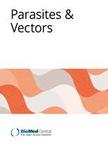版权所有:内蒙古大学图书馆 技术提供:维普资讯• 智图
内蒙古自治区呼和浩特市赛罕区大学西街235号 邮编: 010021

作者机构:Univ Kelaniya Fac Med Mol Med Unit Ragama Sri Lanka Wayamba Univ Sri Lanka Fac Agr & Plantat Management Dept Biosyst Engn Makadura Sri Lanka Univ Kelaniya Fac Med Dept Parasitol Ragama Sri Lanka Natl Inst Fundamental Studies Kandy Sri Lanka Univ Kelaniya Fac Med Dept Zool & Environm Management Kelaniya Sri Lanka Reg Off Anti Malaria Campaign Kandy Sri Lanka Sir John Kotelawala Def Univ Fac Med Dept Parasitol Rathmalana Sri Lanka
出 版 物:《PARASITES & VECTORS》 (寄生虫与载体)
年 卷 期:2018年第11卷第1期
页 面:1-12页
核心收录:
学科分类:0710[理学-生物学] 1002[医学-临床医学] 1001[医学-基础医学(可授医学、理学学位)] 07[理学] 09[农学]
基 金:National Research Council Funded Dengue Mega Grant Sri Lanka [NRC TO 14-04]
主 题:Dengue Empirical Larval indices Risk thresholds Sri Lanka
摘 要:Background: Larval indices such as Premise Index (PI), Breteau Index (BI) and Container Index (CI) are widely used to interpret the density of dengue vectors in surveillance programmes. These indices may be useful for forecasting disease outbreaks in an area. However, use of the values of these indices as alarm signals is rarely considered in control programmes. Therefore, the current study aims to propose threshold values for vector indices based on an empirical modeling approach for the Kandy District of Sri Lanka. Methods: Monthly vector indices, viz PI, BI and CI, for Aedes aegypti and Aedes albopictus, of four selected dengue high risk Medical Officer of Health (MOH) areas in the Kandy District from January 2010 to August 2017, were used in the study. Gumbel frequency analysis was used to calculate the exceedance probability of quantitative values for each individual larval index within the relevant MOH area, individually and to set up the threshold values for the entomological management of dengue vectors. Results: Among the study MOH areas, Akurana indicated a relatively high density of both Ae. aegypti and Ae. albopictus, while Gangawata Korale MOH area had the lowest Based on Ae. aegypti, threshold values were defined for Kandy as low risk (Bl(agp) 1.77), risk (Bl(agp) 3.23), moderate risk (Bl(agp) 4.47) and high risk (Bl(agp) 6.23). In addition, PI 6.75 was defined as low risk, while PI 9.43 and Pl12.82 were defined as moderate and high risk, respectively as an average. Conclusions: Threshold values recommended for Ae. aegypti (primary vector for dengue) along with cut-off values for PI (for Ae. aegypti and Ae. albopictus), could be suggested as indicators for decision making in vector control efforts. This may also facilitate the rational use of financial allocations, technical and human resources for vector control approaches in Sri Lanka in a fruitful manner.